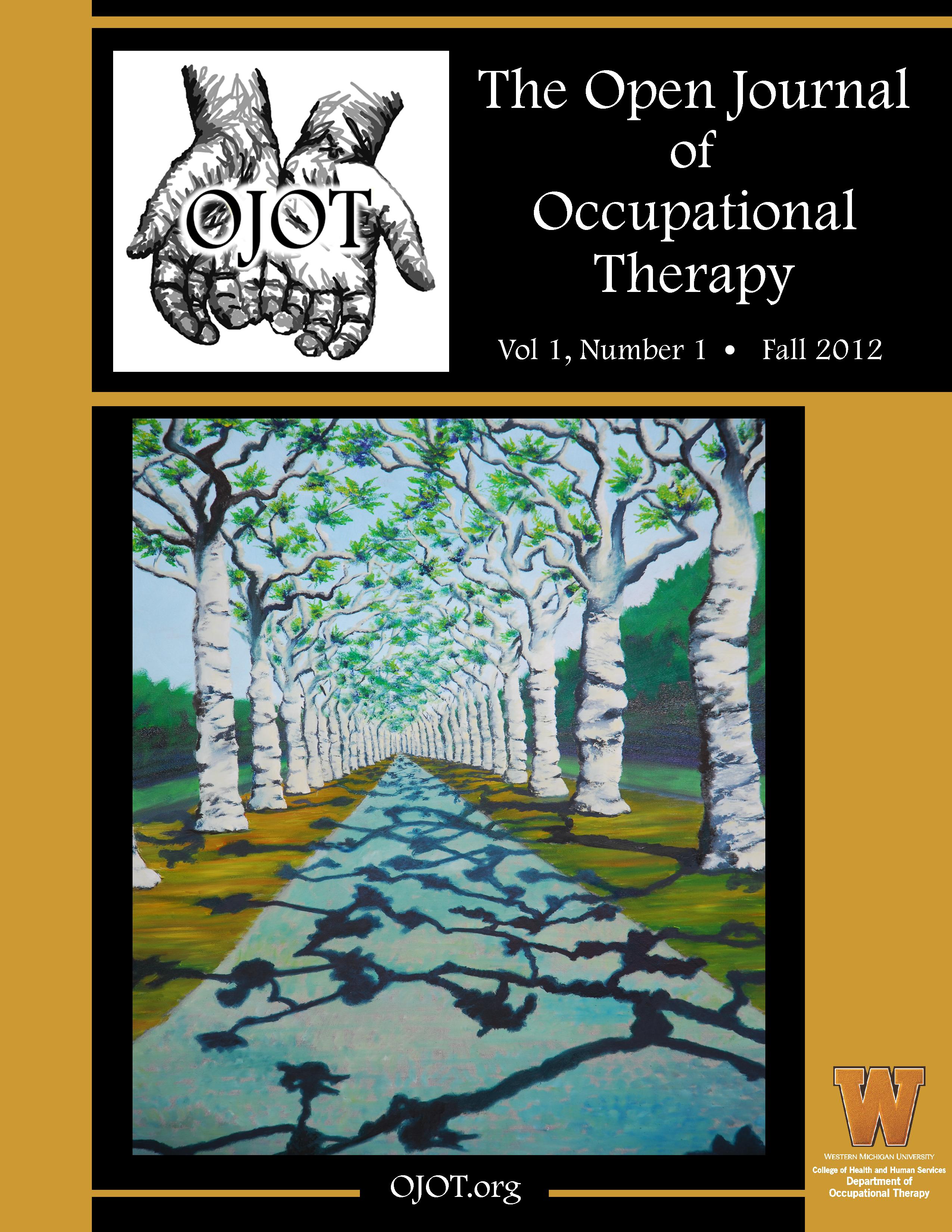ScholarWorks > HHS > OT > OJOT > Vol. 5 > Iss. 3 (2017)
Credentials Display
Andrea Bean, B.Sc., B.Sc.PT; Cathryn Edmonds, PGDip OT(LHMC), MSc OT; Tukata Lin, MSc OT; Rachel Davis, MClSc OT; Lisa Hopcroft, BSc, PT; Alicia Savona, BScPT; Gargi Singh BScPT; Kristina Boccia, BSc,PT; Kyle Leming, MSc. OT; Helen Mann BScPT, BHSc; Helen Razmjou, PT, PhD
Abstract
Background: Shoulder injuries in working age adults result in a major cost to the health care system. The purpose of this study was to examine the effectiveness of a new multidisciplinary rehabilitation program and to explore factors that affected a successful return to work (RTW) in injured workers with shoulder problems who received this program.
Methods: This was a prospective longitudinal study. The patient-oriented outcome measures were the Numeric Pain Rating Scale (NPRS) and the Disabilities of the Arm, Shoulder, and Hand (DASH). Range of motion (ROM) in flexion, abduction, and external rotation and strength in lifting and push/pull were documented. All outcomes were measured before and at the completion of the program.
Results: Data of 68 patients were used for analysis. All outcomes showed a statistically significant improvement over time.
Conclusions: Multidisciplinary rehabilitation programs help to improve pain, disability, ROM, strength, and facilitate RTW. Higher stress and a fast-paced work environment increased the risk of not progressing in work status.
Recommended Citation
Bean, A., Edmonds, C., Lin, T., Davis, R., Hopcroft, L., Savona, A., Singh, G., Boccia, K., Leming, K., Mann, H., & Razmjou, H. (2017). Effectiveness of a Multidisciplinary Rehabilitation Program Following Shoulder Injury. The Open Journal of Occupational Therapy, 5(3). https://doi.org/10.15453/2168-6408.1383


Comments
The authors have nothing to disclose.